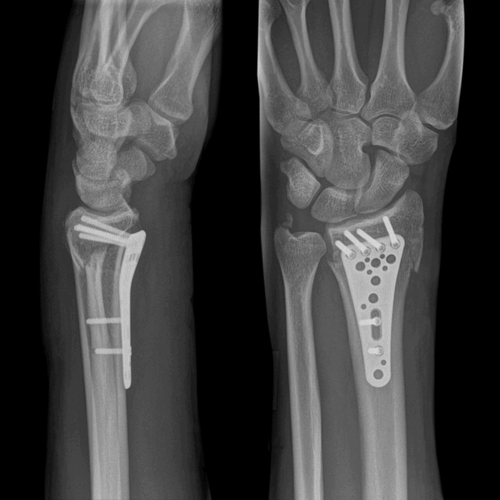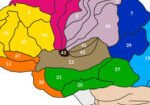An evaluation of wrist and forearm range of motion during purposeful activities and exercises for distal radius fracture
Filed under Reviews
An evaluation of wrist and forearm movement during purposeful activities and range of movement exercises after surgical repair of a distal radius fracture: A randomized crossover study
Collis, J., Mayland, E., Wright-St Clair, V., Rashid, U., Kayes, N., & Signal, N. 2022. An evaluation of wrist and forearm movement during purposeful activities and range of movement exercises after surgical repair of a distal radius fracture: A randomized crossover study, Journal of Hand Therapy, https://doi.org/10.1016/j.jht.2022.07.009
The Skinny
This study investigated how range of motion exercises compared to purposeful activities impact rehabilitation of postoperative distal radius fractures and the movement patterns of the wrist each of the interventions produces.

In the Weeds
Thirty-five adults with a surgical repair of a distal radius fracture participated in two ten-minute intervention sessions, including range of motion exercises and meaningful activities that each participant chose the previous day. Electrogoniometers were used to measure four different movement patterns of the wrist during the interventions. These included accumulated joint position over time, maximum active end range, numbers of repetitions, and excursions beyond 75% of available ROM and percentage of active movement time.

Bringing it Home
The purposeful activities required more repetitions, time of movement, and range of movement when compared to range of motion exercises only. The range of motion exercises was significant in providing more accumulation of joint position and end range of movement with supination. These findings suggest that along with other psychosocial benefits of purposeful activities used as therapeutic interventions, these activities also require the affected wrist to move in greater ranges of motion for a longer amount of time, which increases the repetition of wrist movement. This is important for the beginning phases of postoperative rehabilitation for distal radius fractures.
Rating
⅘
Due to the study’s small sample size, the evidence cannot be generalizable. However, this study provided helpful insight for hand therapists to incorporate purposeful and meaningful activities into treatment for the commonly seen diagnosis of distal radius fractures. This article also encourages more research to be done regarding purposeful activities in hand therapy practice.
More To Read
Use of Proprioception in Rotator Cuff Repair
Article Review By Brittany Day Upper Limb Active Joint Repositioning During a Multijoint Task in Participants with and without Rotator Cuff Tendinopathy and Effect of a Rehabilitation Program Pairot de Fontenay, Benoit, Mercier, Catherine, Bouyer, Laurent, Savoie, Alexandre, & Roy, Jean-Sébastien. (2019). Upper limb active joint repositioning during a multijoint task in participants with and…
Read MoreMirror therapy after a peripheral nerve repair in hand therapy
Rapid Review Paula, M. H., Barbosa, R. I., Marcolino, A. M., Elui, V. M., Rosén, B., & Fonseca, M. C. (2016). Early sensory re-education of the hand after a peripheral nerve repair based on mirror therapy: a randomized controlled trial. Brazilian journal of physical therapy, 20(1), 58–65. https://doi.org/10.1590/bjpt-rbf.2014.0130 The Skinny: Therapy is often provided following an…
Read MoreWhich is better: Splinting the MCP or PIP joint when managing Trigger Finger?
Teo, S. H., Ng D. C., Wong, Y.K.(2018). Effectiveness of proximal interphalangeal joint blocking orthosis vs metacarpophalangeal joint blocking orthosis in trigger digit: A randomized clinical trial. Journal of Hand Therapy, 1-7. The Skinny- This study compared PIP joint immobilization via an Oval-8TM with a custom MCP blocking trigger finger orthosis treatment. In the Weeds…
Read MoreHand Therapy as a New Grad or Student
Tips for Getting Prepared for hand therapy as a new grad or a Level II Fieldwork Everything you need to know in hand therapy starts with the upper extremity anatomy. Here is a quick checklist to review and hopefully help get you started in your new hand therapy setting. By: Tristany Hightower I suggest, as…
Read MoreSign-up to Get Updates Straight to Your Inbox!
Sign up with us and we will send you regular blog posts on everything hand therapy, notices every time we upload new videos and tutorials, along with handout, protocols, and other useful information.






